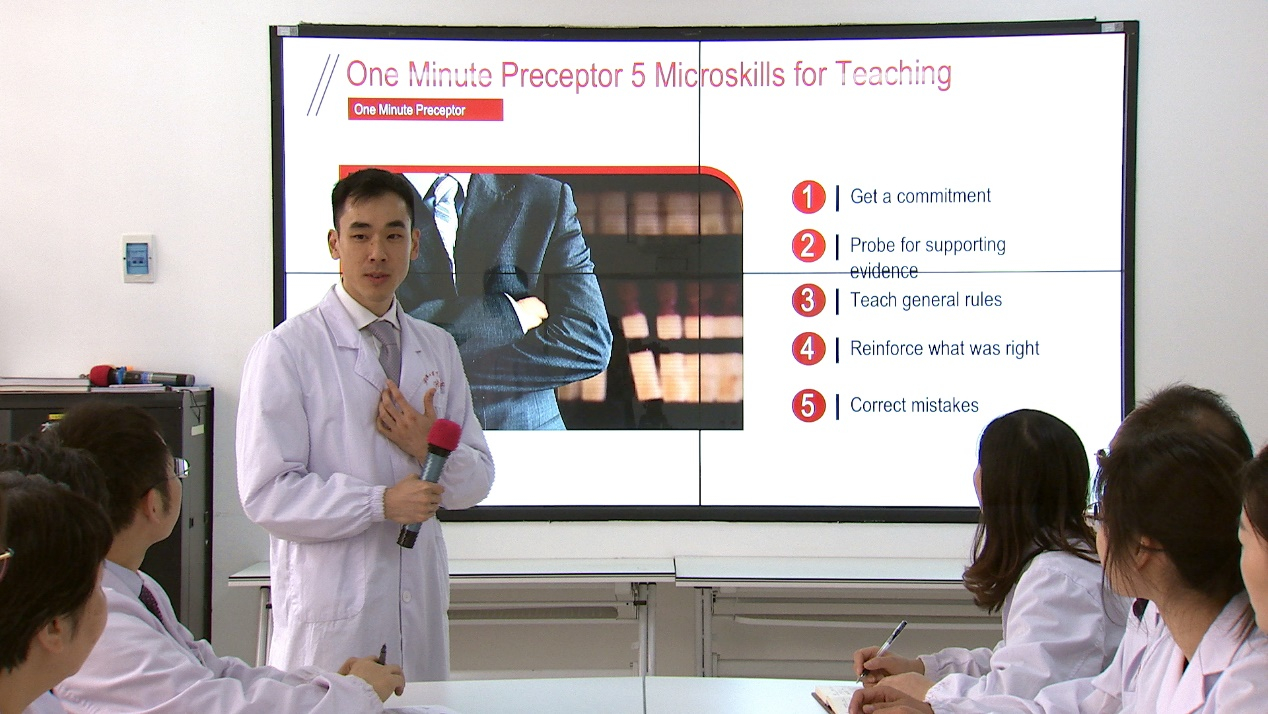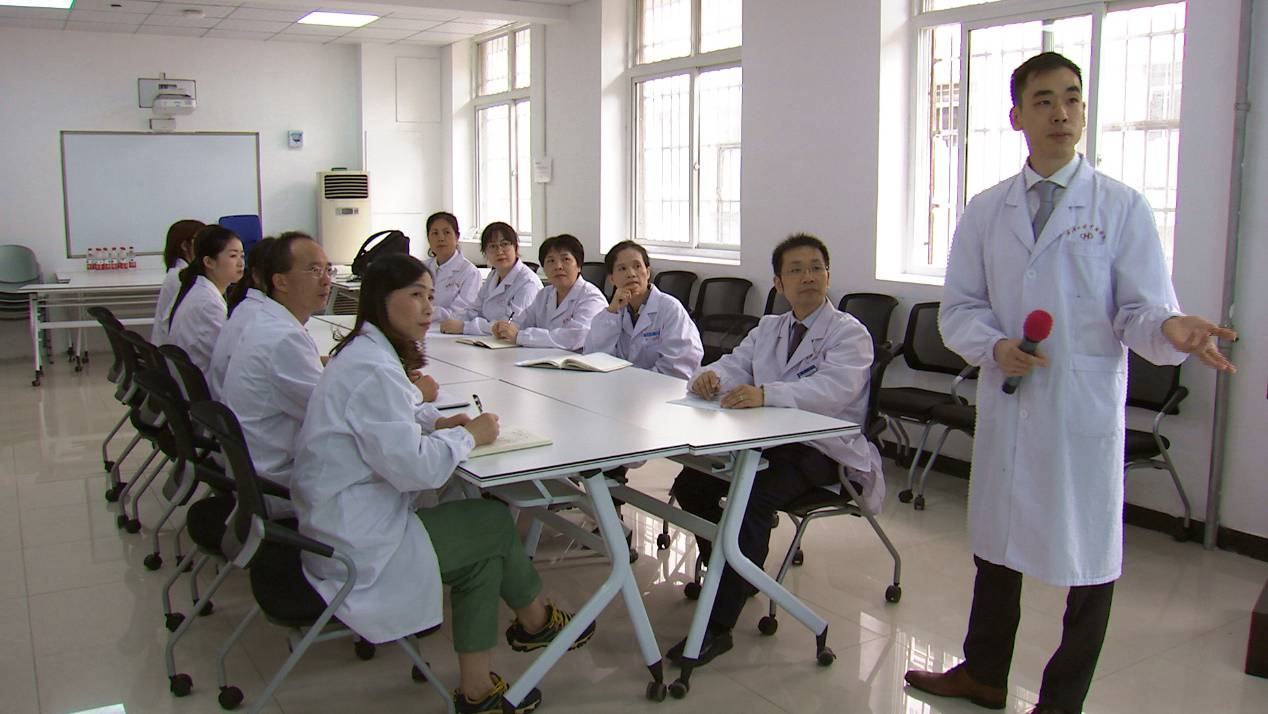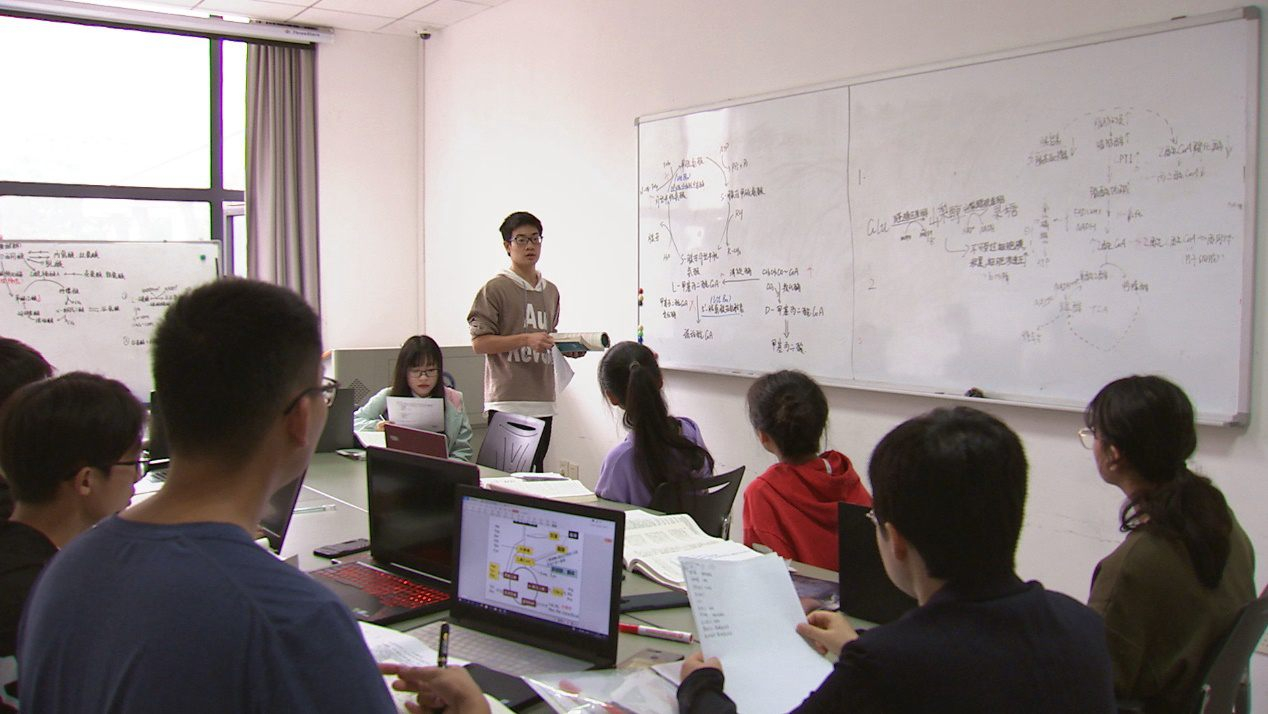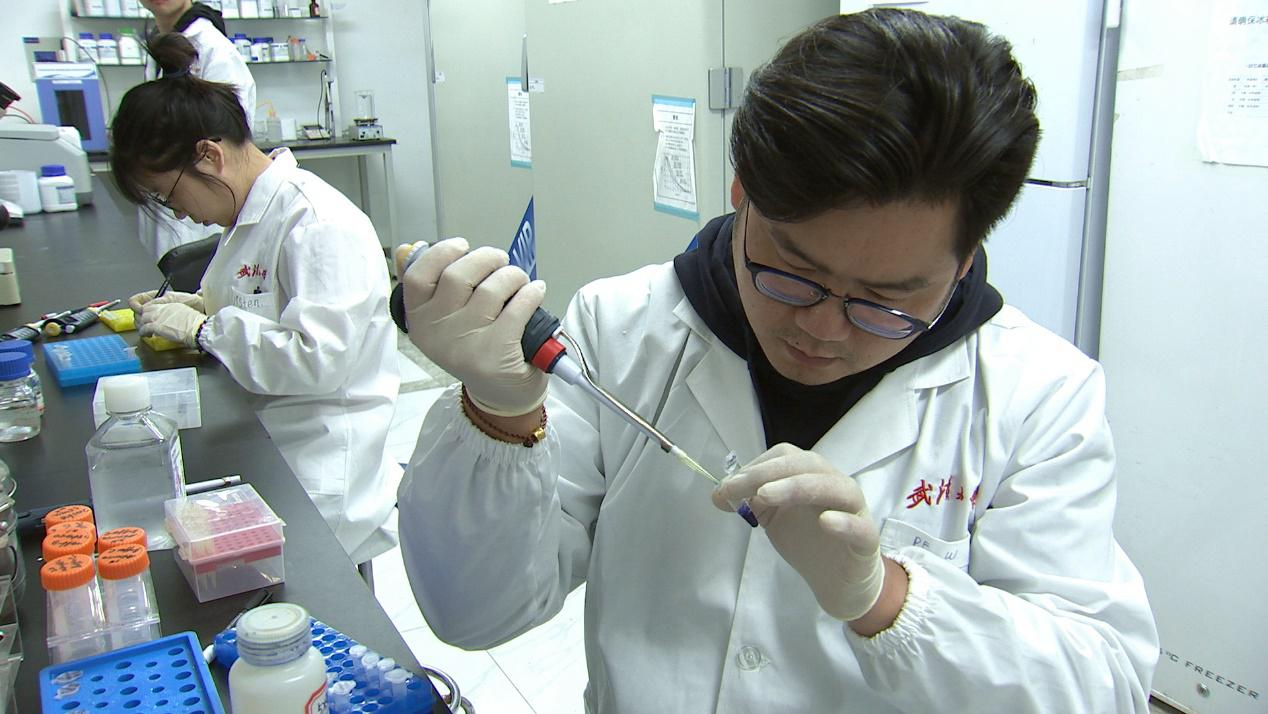03:25

Located in the capital city of central China's Hubei Province, Wuhan University School of Medicine is working towards promoting medical exchanges between the teachers and doctors of China and the U.S.
Founded in 1943, Wuhan University School of Medicine is one of the first of kinds in China. It has been cooperating with many prestigious overseas universities since 2008. The University of Chicago is its closest partner in U.S.
Jonathan Lio, doctor of medicine from University of Chicago, has been taking part in the Education Reform Project of Wuhan University for five years. "Everyone is impressed with the amount of dedication and passion on the part of the Chinese teachers and faculty," he said.

Medical teachers of Wuhan University at Lio's presentation. /CGTN Photo
Medical teachers of Wuhan University at Lio's presentation. /CGTN Photo
In 2008, Wuhan University's School of Medicine started educational reform in collaboration with the University of Chicago. More than 100 faculty members and students from Wuhan have visited the American school since then. In consultation with the University of Chicago, Wuhan University's medicine school changed its entire curriculum and teaching concepts and methods.
According to Professor He Chunyan from the Basic Medicine School of Wuhan University, "We've integrated many separate courses into one, which helps the students to have a complete and systematic understanding of a subject."
Deputy Chief Physician Dai Zhe, who works at Zhongnan Hospital of Wuhan University, also teaches at the school. She speaks highly of the curriculum integration. "Basic medical science, clinical science and clinical practice used to be separate courses. But now we have integrated the three. Students can now have clinical experience earlier than before, which has greatly enhanced their clinical skills."

Medical students in Wuhan University during a group study, Wuhan, Hubei Province, China. /CGTN Photo
Medical students in Wuhan University during a group study, Wuhan, Hubei Province, China. /CGTN Photo
Reducing the number of lectures and increasing group studies is another step towards helping them become active learners. The relationship with Chicago is not just a one-way street. So far, more than 300 faculty members and students from U.S. have also visited Wuhan.
"Teachers on both sides have grown and learned a lot. Not only teachers from Wuhan love to go to Chicago, teachers from Chicago also learned a lot from coming here. We've carried out a lot of researches as well, not only in China but also in the U.S.," Lio said, adding that he believed "two is better than one."
"By working together we put our strength together. I think we can achieve something better than we can do while being apart. Especially, we live in an environment where it's important to understand each other; how different people do things in different ways. Establishing this connection between U.S. and China helps build that," Lio said.

Wuhan University's medical students doing experiments in a lab, Wuhan, Hubei Province, China. /CGTN Photo
Wuhan University's medical students doing experiments in a lab, Wuhan, Hubei Province, China. /CGTN Photo
Tang Qizhu, head of the School of Medicine of Wuhan University, pointed out that making the most of the advantages of both sides forms the basis of their collaboration.
"The talent-fostering concepts of the University of Chicago fit the trend of medical development. Their experiences are very valuable for us. And the University of Wuhan has its own advantages. One of them is abundant clinical cases, which greatly help clinical practices," said Tang.
Tang also said Wuhan hopes to scale up cooperation with American universities even further in the future. It also plans to continue medical education reform and foster medical talent with an international perspective, thereby ensuring that Chinese patients continue to benefit from the school's ever closer collaboration with its U.S. partners.